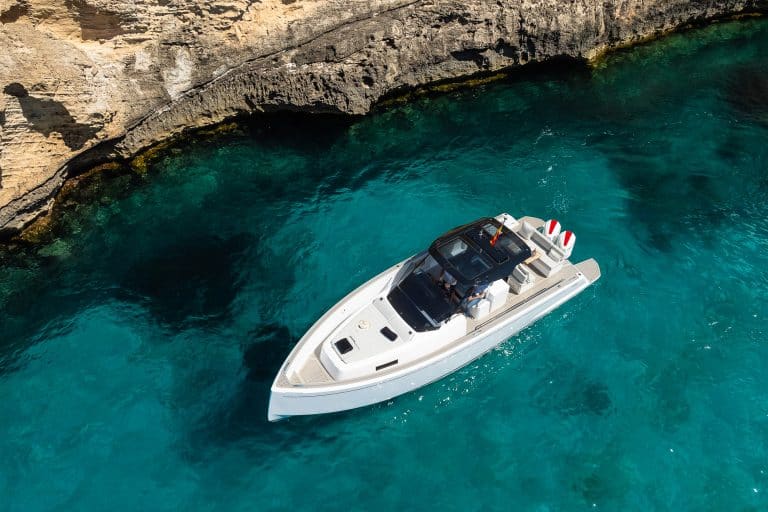What are the best places to dive in Spain? Scuba diving is a fascinating activity that allows you to explore the wonders of the underwater world. Spain, with its rich marine diversity and beautiful coastal landscapes, offers a wide range of incredible places for lovers of this activity. Get ready to dive into a fascinating world full of marine life and breathtaking underwater landscapes.
The Medes Islands (also known as Illes Medas) in Catalonia are an excellent place for scuba diving due to several reasons. First of all, the waters surrounding the Medes Islands are home to an incredible diversity of marine life that makes them a true underwater paradise. Divers have the opportunity to encounter a wide variety of species, from colorful fish to octopus, rays, moray eels and lobsters.
In addition, the waters surrounding the Medes Islands are known for their transparency and clarity, ensuring optimal visibility during diving and facilitating the observation of aquatic life and details of the seabed. These islands also offer breathtaking underwater landscapes. Coral reefs and rock formations create a spectacular underwater environment, where caves, tunnels and arches are waiting to be explored. These unique underwater landscapes make diving in the Medes Islands an exciting and visually captivating experience.
In addition, the Medes Islands have been declared a Natural Park and are protected. This means that measures have been implemented to preserve its rich biodiversity and guarantee the sustainability of the diving activity. The conservation and protection of this environment contribute to maintaining the health and balance of the marine ecosystem, allowing divers to enjoy a pristine and well-preserved underwater environment.

The Cabo de Palos Marine Reserve, located in the region of Murcia, is also an exceptional place for scuba diving. This marine reserve is home to an amazing diversity of marine life. Divers diving in these waters have the opportunity to encounter a wide variety of species, from vibrant corals to octopus, nudibranchs and schools of tropical fish. The abundance and variety of marine life make the Cabo de Palos Marine Reserve a true underwater paradise.
As in the Medes Islands, the waters of Cabo de Palos are crystal clear, offering the opportunity to appreciate all the details and beauty of the reefs, caves and rock formations found in the reserve. Diving in these waters is an unparalleled diving experience and facilitates the observation of marine life in its natural environment. The Cabo de Palos Marine Reserve is also distinguished by its impressive underwater landscapes. From majestic underwater cliffs to extensive posidonia meadows, divers have the opportunity to explore unique and fascinating geological formations.
In addition, the presence of underwater caves and grottos adds an element of adventure and excitement to the diving experience in this reserve. It is important to note that conservation and protection of the marine ecosystem are priorities in the Cabo de Palos Marine Reserve as strict measures have been established to preserve its rich biodiversity and maintain the balance of the ecosystem. These regulations contribute to guarantee the health of the coral reefs, marine habitats and the species that inhabit them. As divers, we can enjoy a well-preserved underwater environment and, at the same time, contribute to the preservation of this valuable ecosystem.

The Canary Islands, located in the Atlantic Archipelago, are recognized as an outstanding destination for diving lovers. One of the main reasons is its extraordinary marine biodiversity. Thanks to warm ocean currents and the presence of diverse underwater ecosystems, the waters surrounding the Canary Islands are home to a wide variety of marine species. During dives, divers may encounter tropical fish, manta rays, sea turtles, dolphins and even whales at certain times of the year. This wealth of marine life makes the Canary Islands a fascinating destination to explore underwater.
Another reason why the Canary Islands are an outstanding enclave is because of the clarity and transparency of its waters. The excellent underwater visibility allows for an incomparable diving experience. Divers can clearly admire the colorful coral reefs, rock formations and breathtaking underwater landscapes found in the depths of the Atlantic Ocean.
The Canary Islands are also distinguished by their unique underwater landscapes due to their volcanic geology. Divers have the great opportunity to explore volcanic caves, natural arches, underwater tunnels and submerged cliffs. These geological formations create a spectacular and exciting underwater environment for diving. In addition, the presence of corals and seaweed adds beauty and color to these underwater landscapes, creating a visually stunning environment.
The year-round subtropical climate of the Canary Islands also contributes to its attractiveness as a diving destination. Pleasant temperatures both in the water and on land allow diving in any season without worrying about extreme cold. The water has a warm temperature, which makes diving comfortable and enjoyable, without the need for thick wetsuits. In addition, this destination has an excellent infrastructure and a wide variety of dive centers that offer services and amenities for divers. Divers can find professional instructors, high quality diving equipment and accommodation options adapted to their needs.

The Columbretes Islands Marine Reserve, located in the Valencian Community, has an impressive marine biodiversity, as it is home to a great variety of species such as octopus, groupers, moray eels and centenarian sea turtles. This abundance of underwater life makes the Columbretes Islands a true underwater paradise, offering divers the opportunity to have close encounters with a variety of marine species.
Divers can appreciate in detail the impressive coral reefs, rock formations and the rich marine life that inhabits its natural environment due to its crystal clear waters. The underwater landscapes of the Columbretes Islands are truly unique and amazing. Volcanic islands, submerged cliffs and rock formations create a spectacular and diverse underwater environment.
On the other hand, the conservation and protection of the Columbretes Islands Marine Reserve is fundamental. Strict measures are in place to preserve the marine ecosystems and the wildlife that inhabits them. The regulations and restrictions in place help maintain the health of the coral reefs and marine habitats. In this sense, access to the Columbretes Islands is controlled and limited due to their status as a marine reserve, something that provides divers with a quieter and less crowded underwater environment, where they can enjoy the beauty of nature in its purest state.

The Costa del Sol, in the region of Andalusia, is also a very attractive destination for scuba diving. First of all, the region is home to an impressive diversity of marine life, ranging from colorful Mediterranean fish to sea turtles, dolphins and even sharks. This richness and diversity make scuba diving on the Costa del Sol very exciting.
In addition, the Costa del Sol offers warm, clear waters for most of the year. As in the Canary Islands, the Costa del Sol has pleasant temperatures that allow diving without the need for thick wetsuits, while the clarity of the water offers excellent visibility.
The variety of dive sites is another advantage of the Costa del Sol. From shallow reefs to underwater caves and sunken wrecks, there are options for divers of all experience levels. Each site offers a unique experience, giving divers the opportunity to discover different underwater landscapes and marine species.
On the other hand, this destination has a well-developed tourist infrastructure with a wide range of dive centers and services for divers. Professional dive centers offer equipment rental, diving courses and expert guides who know the local dive sites. In addition, there are options for accommodation, restaurants and other activities to enjoy out of the water.
In addition to scuba diving, the Costa del Sol offers a wide variety of tourist attractions, from beautiful beaches, charming coastal villages, rich culture and a variety of excursions to nearby historical sites, such as the Alhambra in Granada or the old town of Malaga. This combination of diving and sightseeing makes for a complete and varied vacation.

Conclusion
Without a doubt, there are many places that could be considered the best places to dive in Spain. Whether you choose to explore the Medas Islands in Catalonia, dive the Cabo de Palos Marine Reserve in Murcia, discover the underwater wonders of the Canary Islands, explore the Columbretes Islands Marine Reserve in the Valencian Community or enjoy the waters of the Costa del Sol in Andalusia, you will find unforgettable underwater experiences in every corner of the country. Get ready to immerse yourself in a fascinating world full of marine life and breathtaking underwater landscapes.








